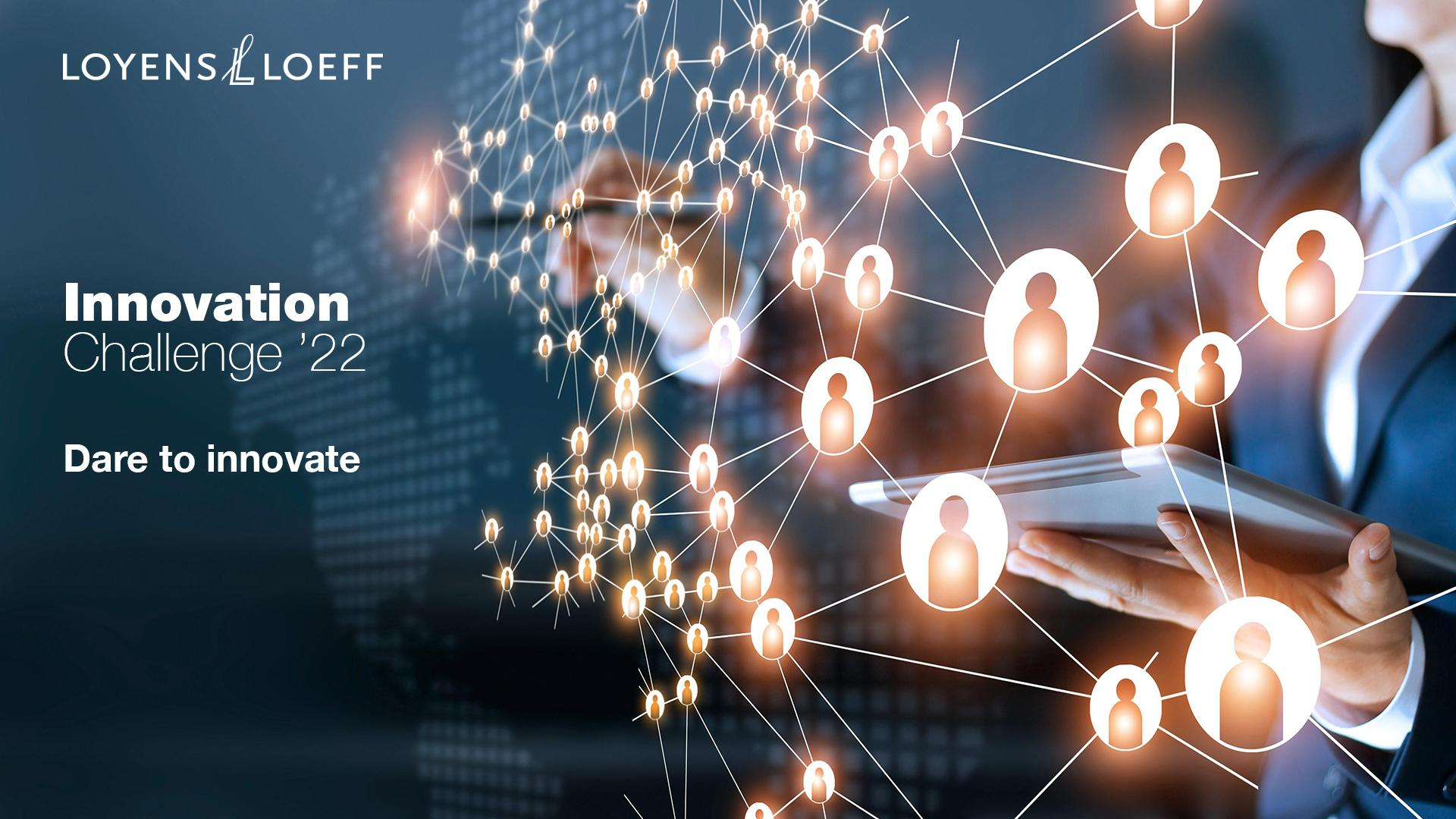How can law firms and tax & accounting firms create a culture of innovation within that will promote collaboration and efficiency across the firm?
Innovation can come from many sources. However, Loyens & Loeff, a leading European law and tax firm, believes one of the greatest sources of untapped innovation is within the firm itself.
To tap into the collective ingenuity and creativity of its hundreds of attorneys, tax advisors, and staff in its offices across Europe, North America, and Asia, Julien Cayet, the firm’s director of technology and innovation, helped the firm launch an internal Innovation Challenge to stimulate innovation engagement firmwide.
The Innovation Challenge was intentionally set up to encourage cross-function and cross-border collaboration, requiring each team to have at least six people from at least two practice groups and two jurisdictions.
“We wanted to encourage our colleagues to rise above their natural silos and bubbles,” says Cayet. “It made people open up and think creatively, not just about how to form their teams, but also how to sell their idea to colleagues, identify specific expertise within the firm, and find ways to work effectively together.
“It also made it fresh and exciting by working with colleagues that they don’t normally bump into. ‘We need someone in a specific practice in Belgium? Fine, we’ll call someone in Brussels.’ It created these wonderful mixed teams that also reflected the tremendous diversity of the firm.”
Hitting the road & getting the challenge off the ground
Cayet says the firm didn’t want the challenge to be seen as just another memo or directive from management. So he applied a bit of innovation himself to get people involved.
“How do we get them excited about this?” he asks. “I knew that we had to elevate our communication efforts to enthuse our colleagues to apply. With our colleagues having busy schedules and innovation not being top of mind yet, this wouldn’t be the first item that they would naturally gravitate towards.”

So, on top of drawing upon existing corporate communication channels, Cayet virtually criss-crossed the firm’s far-flung global offices with a roadshow in a bid to stir up excitement. He joined dozens of practice group and staff meetings. And buy-in from partners who introduced Cayet and the Innovation Challenge in each meeting helped establish that the firm was serious about wanting people to get involved.
Still, Cayet and firm management were unsure how many employees would actually convert their interest into participation. Cayet says he would have been pleased if a dozen entries had resulted. Yet, in the end, 42 entries were submitted, representing almost 200 attorneys, tax advisors, and staff members who were willing to devote the time and effort needed to form teams, brainstorm ideas, and develop proposals to present to the panel of judges.
One challenge, two products
After carefully evaluating the entries, the judges selected an idea for a client contract management tool that would extend the firm’s involvement in client contracts through their implementation and beyond. The tool captures and tracks the main data points of a transaction, such as a corporate or real estate deal, helping to ensure that deadlines are met, and commitments honored.
As a result, the client sees successful long-term results from the contract, and the firm stays engaged beyond simply negotiating and reviewing the contract. “It’s typically an area where a transactional practice may not be tapping into all aspects of the contract lifecycle,” Cayet notes. “This tool helps our colleagues to do exactly that. It provides better, value-added services to our clients for the long-run.”
A working prototype of the client contract management tool has been developed, and implementation is now underway, less than a year after the challenge.
In addition to the client contract management tool, the firm invited about 500 colleagues to select a second winning entry, which they termed the Public Award. They chose a data visualization tool that could provide a 360-degree graphical view of a client, giving all the teams working with a specific client the same view in regard to the client’s documents, compliance status, and more.

Besides giving the firm a second innovation product to develop and implement, the Public Award initiative also helped extend participation in the Innovation Challenge throughout the firm. “It provided an important sense of ownership and participation,” says Cayet. “That we value our people, their ideas, and their input. Everyone can contribute to making the firm better and more effective, and we each can play a role in supporting every one of our colleagues.”
Expanding the challenge
Following the success of the first Innovation Challenge last year, Cayet and firm management immediately began planning how to continue the initiative. Even after the selection of the two winning ideas, they realized that they were still impressed with many of the 40 other entries.
This year’s Innovation Challenge will be akin to a hackathon format, where the teams will build rapid prototype solutions to solve real business challenges, some of which are based on ideas from last year. Cayet hopes to channel the enthusiasm and competitive energy demonstrated in the first phase of the challenge to develop other products that the firm can quickly put to use across its offices, and to capitalize on the feeling of ownership of both the projects and the firm at-large that the team members have embraced.
In one format or another, the Innovation Challenge is likely to become an annual staple for the firm, Cayet adds.
More than just the ideas
The Innovation Challenge brought tremendous benefits to the firm and its culture even beyond the specific ideas that are identified, cultivated, and ultimately implemented. “I’ve always viewed a large part of my job as achieving cultural activation,” says Cayet. “It isn’t just about the innovations themselves, but really about making innovation part of our everyday discussions. Whether it’s a practice group meeting or a decision about the firm as a business, innovation should be something that’s naturally a part of any discussion.”
Cayet notes that while lawyers are often viewed as being innovation-shy or even sometimes technology-averse, he strongly feels that the challenge didn’t necessarily spur innovation, so much as it tapped into the potential that had been there all along. Many in the profession, he thinks, may be underestimating the drive for innovation that’s taking hold at many firms, particularly among the younger generation of lawyers.
“We’re not there yet, but hopefully the Innovation Challenge is an important first step in making innovation a natural part of our firm culture,” he adds.







